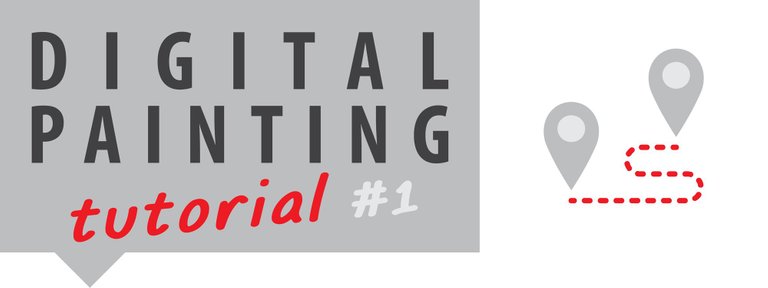

I fondamentali per l'apprendimento della pittura di ambientazioni - Tutorial sulla pittura digitale #1
Chiunque voglia imparare a dipingere paesaggi e ambientazioni deve necessariamente scontrarsi con una serie di fondamentali da apprendere per poter realizzare una scena avvincente. Ho provato a riassumerli e metterli in lista, sebbene non debbano stare necessariamente in quest'ordine. Per ognuno dei punti, pubblicherò dei tutorial o dei trucchi e consigli.

Fundamentals of learning how to paint environments - Digital painting tutorial #1
Anyone who wants to learn to paint landscapes and environments must necessarily face a series of fundamentals to learn in order to create a compelling scene. I tried to summarize them and put them in a list, although they do not necessarily have to be in that order. For each of the points, I will publish tutorials or tips and tricks.

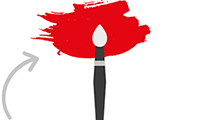

Strumenti per la pittura in digitale
Di cruciale importanza è conoscere tutti gli strumenti che il software (es. Photoshop) mette a disposizione per dipingere. Fondamentale lo strumento pennello che a seconda di come è settato può dare effetti completamente diversi. Ad esempio ci sono i pennelli base, i pennelli texture o i pennelli che applicano forme come fossero un timbro. Esistono poi altri modi per dipingere e mischiare il colore, come attraverso l'uso delle selezioni o i filtri sfocatura.

Tools for digital painting
It's crucial to know all the tools that the software (eg. Photoshop) provides for painting. The brush is a fundamental tool that depending on its settings, it can give completely different effects. For example there are basic brushes, texture brushes, or brushes that apply shapes like a stamp. There are also other ways to paint and mix color, such as through the use of selections or blur filters.

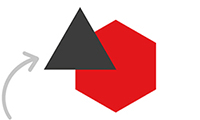

Sintetizzare le forme
Quando vogliamo dipingere un paesaggio si può venire sopraffatti dall'enorme quantità di informazioni di cui dobbiamo tenere conto. Ma anche l'elemento più dettagliato può essere sintetizzato in forme più semplici e di più facile decodifica: come processo di pittura, conviene infatti iniziare a dipingere le forme semplificate per poi aggiungere dettagli e portarle al finito.

Synthesizing forms
Painting landscapes can be overwhelming due to the enormous amount of information we need to take into account. But even the most detailed element can be synthesized in simpler forms and easier to decode. As a painting process, it is better to start blocking in the simplified forms and later do the detailing and polishing.



Prospettiva atmosferica
Dipingendo paesaggi occorre creare l'illusione di avere grandi distanze dentro una tela bidimensionale. Per fare ciò, dobbiamo trovare degli stratagemmi che suggeriscano profondità all'occhio dello spettatore. Alcuni di questi sono, ad esempio, aumentare o diminuire il contrasto e la saturazione a seconda della vicinanza con lo spettatore, o creare sovrapposizioni di elementi e così via.

Atmospheric perspective
Painting landscapes requires that you create the illusion of having large distances inside a two-dimensional canvas. In order to do this, we need tricks that suggest depth to the viewer's eye. Some of these are, for example, improving or decreasing contrast depending on the distance from the viewer, or overlapping elements and so on.

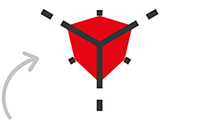

Prospettiva geometrica
La prospettiva geometrica è fondamentale quando il paesaggio contiene degli elementi architettonici (sebbene possa essere usata anche con elementi naturali). Oltre a dare un'illusione di tridimensionalità, può far sembrare lo spettatore sopra o sotto la scena principale. La prospettiva geometrica consiste in una linea dell'orizzonte, punti di fuga e linee prospettiche.

Geometric perspective
Geometric perspective is fundamental when the landscape contains architectural elements (although it can also be used with natural elements). Besides giving an illusion of three-dimensionality, it can make the viewer appear above or below the main scene. Geometric perspective consists of the horizon line, vanishing points and perspective lines.



Regole di composizione
Posizionare gli elementi in maniera da valorizzarli al meglio può determinare la buona riuscita di un'illustrazione. Esistono delle regole standard per la buona composizione che aiutano l'artista a comprendere come impostare il proprio lavoro, come, ad esempio, la regola dei terzi, la regola dei dispari, la composizione "steelyard", etc.

Rules of composition
Positioning the elements smartly can determine the success of an illustration. There are standard rules for good composition that help the artist understand how to set up their own work, such as, for example, the rule of thirds, the rule odds, the "steelyard" composition, etc.

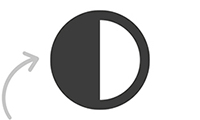

Valori tonali
Guardando un paesaggio, l'occhio dello spettatore lo legge in base alla scala dei valori tonali (dalla luce al buio). Per realizzare un'ambientazione ricca di informazioni, è necessario quindi conoscere i tipi di luce e di ombra e il loro corretto posizionamento, per creare una solida base dove applicare il colore.

Tonal values
When looking at a landscape, the eye of the spectator reads it according to the scale of tonal values (from light to dark). To paint an environment rich of information, it is therefore necessary to know the types of light and shadow and their correct positioning, which creates a solid base for applying color.

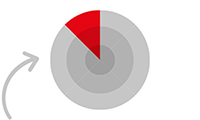

Applicare il colore
Un corretto studio della teoria del colore permette di trovare la giusta palette per dipingere un paesaggio. L'equilibrio tra complementari e analoghi decide il mood dell'illustrazione, ovvero quel che lo spettatore proverà guardandola. Nella pittura digitale, risultano molto utili i Metodi di fusione, un sistema che permette di applicare colore in un secondo momento.

Applying colour
A solid study of color theory is vital for choosing the right color swatches to paint a landscape. The balance between complementary and analogous colors sets the mood of the illustration, hence what the viewer feels when looking at it. In digital painting, Blending modes are a useful system that allows the artist to apply color at a later time.

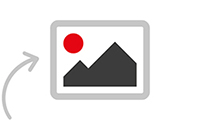

Utilizzare le foto
Uno dei grandi vantaggi che il software digitale ci offre, è integrare foto o texture fotografiche a supporto della nostra pittura. Attraverso i Metodi di fusione è possibile inserire le foto in maniera coerente con il resto del dipinto, mentre con gli strumenti per la trasformazione è possibile mettere eventuali foto o texture in prospettiva.

Using photos
One of the great advantages that digital software offers, is to integrate photos or photographic textures to support our painting. Through Blending modes it is possible to insert the photos in a coherent way with the rest of the painting, while with transformation tools you can put any photo or texture in perspective.

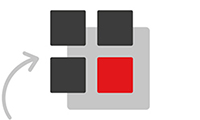

Dalle thumbnail all'illustrazione finale
Creare un'illustrazione da zero significa saper mettere in gioco tutte le conoscenze e tutte le indicazioni mostrate nei punti precedenti. Il processo creativo include alcuni passaggi che sono d'obbligo per dare origine ad un'ambientazione che funzioni. Ovvero, è bene cominciare dalle thumbnail (le miniature) tramite cui è possibile testare diversi punti di vista e diverse composizioni. Una volta scelta la direzione da prendere, si procede realizzando uno speedpainting (studio veloce di circa 30 min/1 ora) per poi lavorarlo ulteriormente per quante ore ce ne è bisogno.

From thumbnails to final painting
Creating an illustration from scratch means knowing how to put into play all the knowledge and indications shown in the previous points. The creative process includes some steps that are required to giove birth to an environment that works. It is good to start off with thumbnails that allow you to test different points of view and different compositions. Once you've picked a direction, you can create a speedpainting (fast study of about 30 mins/1 hour) and then process it further for as many hours as needed.
Great stuff :)!!